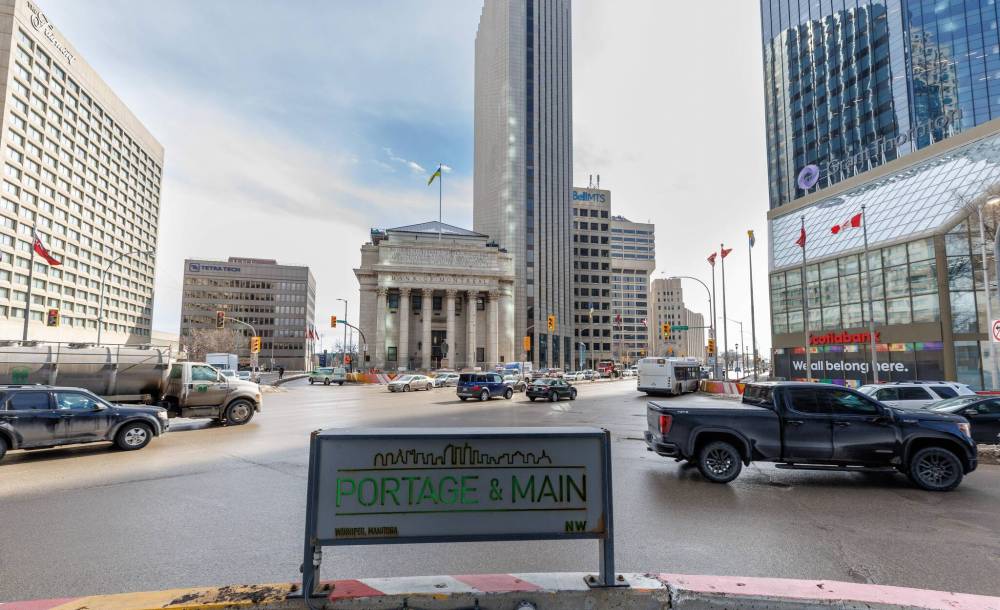The roads ahead
Advertisement
Read this article for free:
or
Already have an account? Log in here »
To continue reading, please subscribe:
Monthly Digital Subscription
$0 for the first 4 weeks*
- Enjoy unlimited reading on winnipegfreepress.com
- Read the E-Edition, our digital replica newspaper
- Access News Break, our award-winning app
- Play interactive puzzles
*No charge for 4 weeks then price increases to the regular rate of $19.00 plus GST every four weeks. Offer available to new and qualified returning subscribers only. Cancel any time.
Monthly Digital Subscription
$4.75/week*
- Enjoy unlimited reading on winnipegfreepress.com
- Read the E-Edition, our digital replica newspaper
- Access News Break, our award-winning app
- Play interactive puzzles
*Billed as $19 plus GST every four weeks. Cancel any time.
To continue reading, please subscribe:
Add Free Press access to your Brandon Sun subscription for only an additional
$1 for the first 4 weeks*
*Your next subscription payment will increase by $1.00 and you will be charged $16.99 plus GST for four weeks. After four weeks, your payment will increase to $23.99 plus GST every four weeks.
Read unlimited articles for free today:
or
Already have an account? Log in here »
Hey there, time traveller!
This article was published 08/03/2024 (644 days ago), so information in it may no longer be current.
Crossing the street.
In Winnipeg, this simple act of urban navigation has been discussed relentlessly and debated passionately.
Few other civic issues have drummed up as much public controversy in recent years as the prospect of reopening Portage and Main to pedestrian foot traffic. Advocates have campaigned, politicians have picked sides and citizens have voted.

MIKE DEAL / FREE PRESS
Traffic at Portage Avenue and Main Street.
After all that bluster, however, the decision is ultimately coming down to cost.
And it’s no surprise that we’ve arrived at this crossroads.
In 2018 — during the polarizing, non-binding plebiscite launched by then-Mayor Brian Bowman — there was already talk of the need to repair the underground concourse at Portage and Main.
The intersection’s waterproof membrane was nearing the end of its useful life and water had begun trickling into the below-grade roundabout. Repairs were on the immediate horizon and they were expected to be costly.
At the time, 65 per cent of respondents voted against opening the intersection, based on little more than a feeling. In 2018, there was no publicly available information about the depth of the required repairs or their expense because the city had not yet conducted a full-scale engineering study. Opinion inevitably won out over non-existent facts.
It’s a state of affairs so strange, and yet so innately Winnipeg, it feels as if it could have been scripted by Guy Maddin himself.
That referendum will go down in history as a useless civic exercise that did nothing but sow division and pass a difficult infrastructure decision onto taxpayers, while kicking the issue down the road to the next municipal government.
Now, thanks to a new engineering report, it’s become clear just how costly revitalizing Winnipeg’s iconic intersection will be.
The document suggests replacing the membrane would total $73 million and require years of disruptive roadwork. The job would buy the city another 40-ish years of use before the membrane would need to be dug up and replaced again.
In light of this information, Mayor Scott Gillingham has reversed his previous position and thrown his support behind reopening the intersection. While this is the correct decision for myriad accessibility and downtown vibrancy reasons, opting for money-saving measures usually means sacrificing vision. As is the case here.
Gillingham’s preferred plan would see the concrete barricades removed, new crosswalks installed and the underground concourse closed permanently — the cheapest option outlined in the report.
It would still cost approximately $10 million to install new pedestrian corridors, plus another $20 million to $50 million to decommission the city-owned walkway. Closing the concourse would, however, save on future repairs.
The proposition has been met with mixed reactions from the public and from proprietors of the surrounding office towers. While Gillingham is keen to find approval for the plan by the end of this month, shuttering a local landmark — even one with a fraught history and an expensive, uncertain future — is not a decision to be made in haste.
A council motion is being drafted to allow residents to, once again, cross the street in downtown Winnipeg. Some people will cast it as simple economics, while others may go further, arguing that it’s a significant, if symbolic, step in providing some balance to Winnipeg’s automobile-first car culture.
The decision will undoubtedly spark debate in the council chamber. Today’s civic leaders should grapple long and hard with the future of the city’s famous corner. It’s a job long overdue and the kind of difficult decision-making they were hired to do by their constituents.








